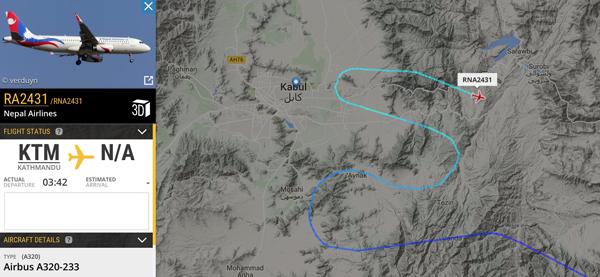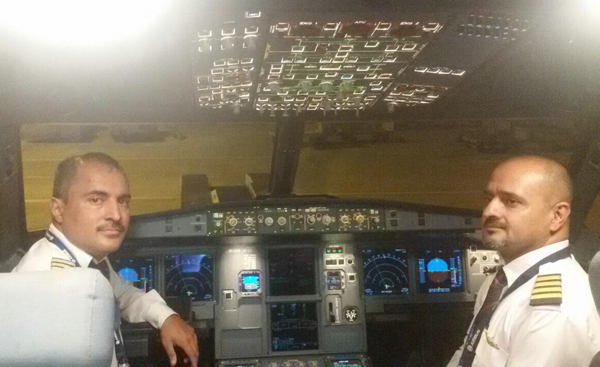In Picture:Â Captain Srawan Rijal (left) with his brother and co-pilot Subash Rijal in the cockpit during the flight to Kabul.
Kathmandu, June 23, 2016:Â Within an hour of the decision by Prime Minister K P Oli to bring back the bodies of the Nepalis killed in Kabul bus bomb on the morning of 19 June, Foreign Minister Kamal Thapa had got the logistics moving. Nepal Airlines had been informed to have an aircraft ready to go, the Embassy in Islamabad was informed to lease with the Afghan authorities to have the bodies ready at the airport.
The job of readying the aircraft and route permissions was given to Capt Srawan Rijal, who has been the pilot liaising with Airbus of the airline’s acquisition last year of two 320-200s. It was 9:30 PM by the time the route permissions for the countries the plane would overfly started coming in. The Indian permission came first, and then the Afghan. But the Pakistan permission was delayed.

The airline didn’t have any detailed airways navigation maps for Afghanistan and the final approach chart for Kabul airport. Capt Rijal worked hard to get all the permits and charts ready. He then had to program the onboard computers with the route for the journey to Kabul and back.
Kathmandu Airport closes at 12 midnight, and it was impossible to get everything ready. Nepal Airlines got special permission to take off finally at 3:30 AM on Tuesday 21 June. By the time the plane had flown the 3.5 hour journey to Kabul the sun was rising and the crew readied the plane for the intricate descent over the Hindu Kush mountains.

With the terrain, Kabul airport also has restrictions due to security. The plane has to make a snaky approach from the south and come down to 12,500 ft to avoid high mountains and then make a steep descent down to the airport at 5,000 ft to avoid anti-aircraft and missile fire.
“It was one of the most challenging landings I have made in my career,†Capt Rijal told Nepali Times. “It was like flying into a war zone that it is.â€
In the cockpit on the right hand seat was Srawan Rijal’s brother, Capt Subash Rijal. The two come from a family of pilots: their father is a veteran of Nepal Airlines and their other brother is also a pilot with the airline.
On board were also Nepal Army medical personnel and staff from the Ministry of External Affairs.
The plan was to have just a two hour turnaround in Kabul, but although the coffins with the dead Nepalis was ready to load the 24 Nepalis who wanted to take the government’s offer to fly back to Nepal needed time to get their exist permits at immigration.
It was noon local time when everything was ready for the return journey. The flight attendants made sure the Nepalis on board were comfortable and listened to their stories.
Capt Rijal is full praise to the government and Nepal Airlines management who pulled all the stops to complete the operation successfully.
“It was because all the departments coordinated well that we pulled it off,†he said, “and I was proud to be part of an operation to take the national flag carrier to help evacuate the bodies of our citizens at such a tragic time. We carried out our responsibility to the nation.â€







